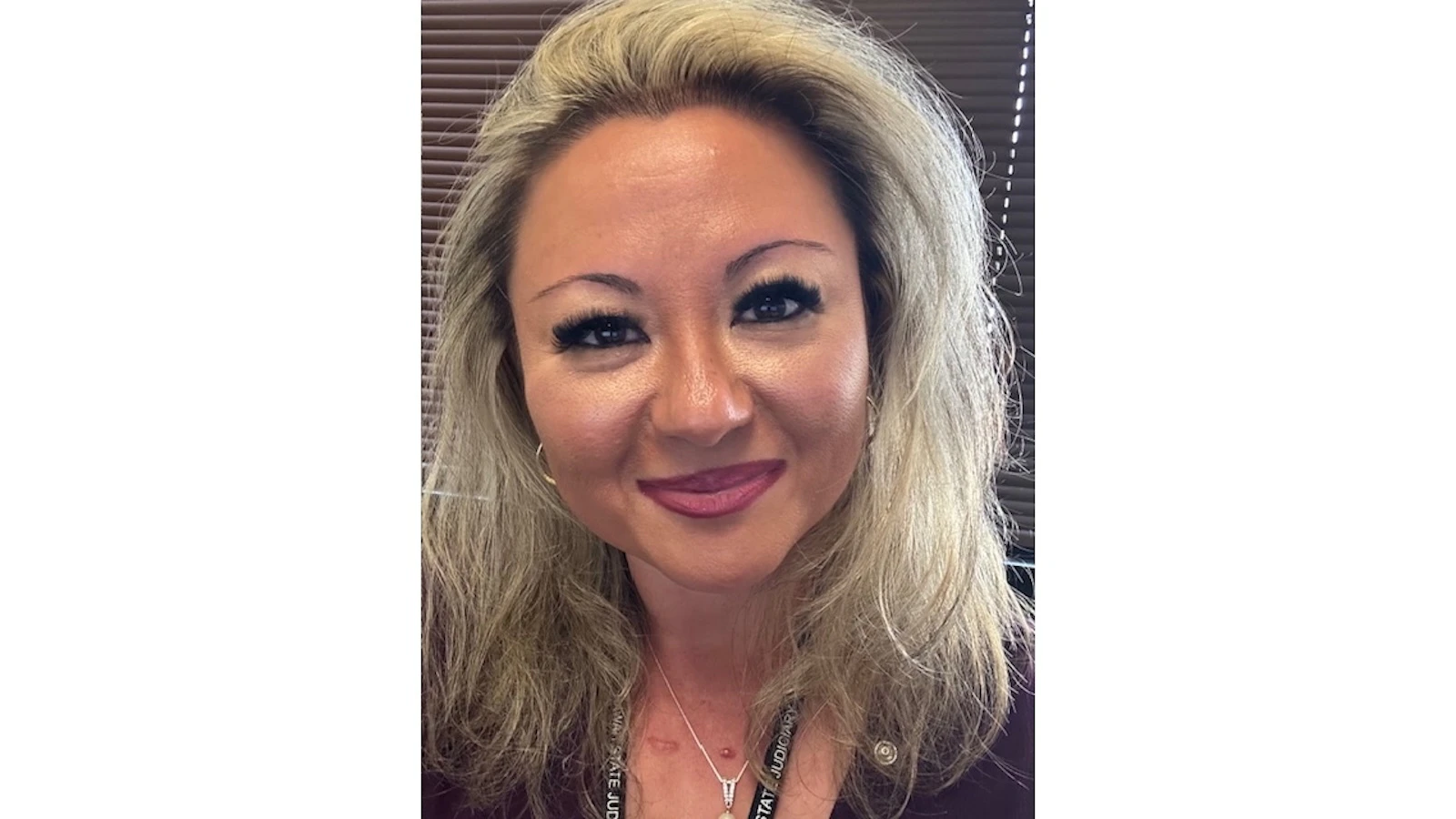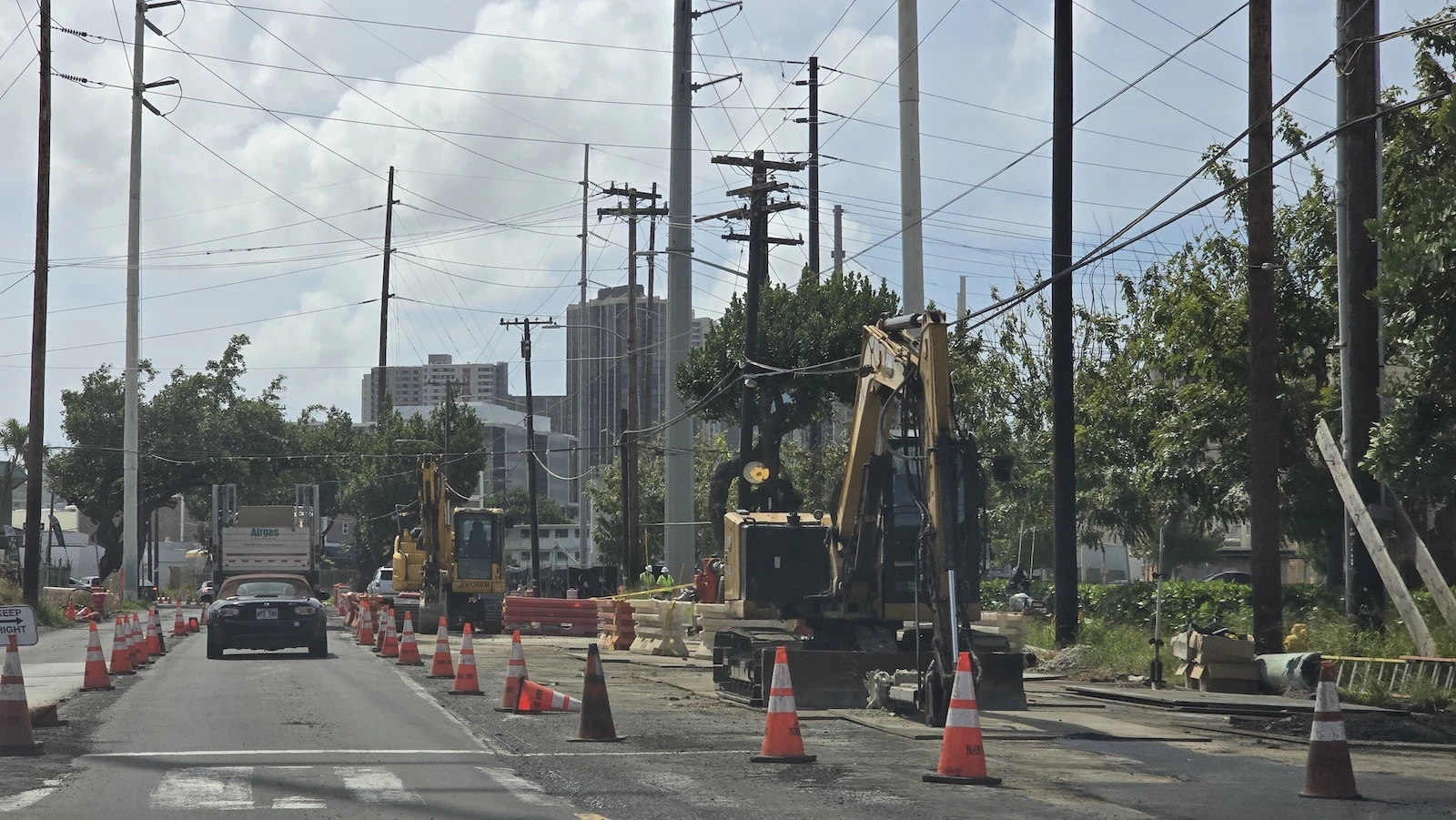Amanda Ybanez, chair of the Kalihi-Pālama Neighborhood Board No. 15, says there's a lot happening in her community.

“It’s a working-class community and it’s actually very vibrant, but it’s full of challenges and needs, especially with the rail coming through,” she told Aloha State Daily Saturday, following a tour of the neighborhood she serves.
Ybanez took ASD all around the community — through Iwilei, the ongoing roadwork along Dillingham Boulevard and to a nearby kauhale; past O‘ahu Community Correction Center; to Sand Island, around Kalihi and more.
The district — the full boundaries of which can be found here — covers a swath of Honolulu’s urban core.
Ybanez says the neighborhood has the largest urban core population, as well as high densities of houseless individuals, people who need social services and residents who live in public housing.
The district also encompasses the state’s largest jail facility, OCCC, as well as Iwilei, the urban neighborhood poised for redevelopment in the coming years as work on the Skyline rail continues.
Aloha State Daily spoke with Ybanez about the neighborhood, its challenges and what lies ahead.
What are some of the biggest challenges the community is facing today?
Right now, I feel we are all facing problems with game rooms and the crimes that stem from that. Such systemic issues from those — which seems to be plaguing not only my community, but every single community — includes drug dealing, crime, violence, rape, sex trafficking and guns. Illegal game rooms feature a lot of bad aspects that happen in and around our own communities and in neighborhoods that shouldn't be happening. A lot of that is going on. It seems to be affecting a whole lot more people across the island.
Another problem we're facing is the homeless and [unaffordability]. Things are becoming out of reach of people having housing, being able to support themselves for just the basic needs, such as food, water [and] shelter, that's becoming a problem. In fact, it is overwhelming already at this moment, and I think everybody's trying to deal with it in the best way that they can. And fortunately, [it is] very good that we have city and state officials who are on the same page with each other to help to tackle this issue — some of which is the formation of the kauhales [communal villages of tiny homes for the homeless] ... at the same time, not just chasing people from one side of the sidewalk to the next, but being able to have ongoing conversations and outreach with services to provide [to] these people.
Iwilei in particular is poised for a lot of growth and redevelopment in the coming years. Can you talk about what's in store for the future for that community and the entire neighborhood?
There is much change to be occurring and whatever's going to be happening in my area will set the precedence for the rest of urban core as the rail gets built through ... inclusive of affordable housing and the building infrastructure and the understandings that come from that. It is now more crucial than ever before that the community gets involved in these ongoing conversations of what gets developed, who is developing it and what is the price point and what qualifies our residents to get into these kind of condos or high rises or whatever they want to call it. Have those ongoing conversations and engagement with the developers and our state officials.
What is the best part about the community?
The best part of my community is the resilience of the people. This is a hard-working community. It's built from immigrants. It's built from Native Hawaiians. It's a mixture of so many people and they are resilient and they're hopeful. My only hope for them is for them to come to the table, to be part of that conversation. That is what I really hope and that is my dream, for Honolulu, for Kalihi to be the starting point of that.
More information about Kalihi-Palama Neighborhood Board No. 15, which meets at 7 p.m. on the third Wednesday of each month, can be found here.
Stephanie Salmons can be reached at stephanie@alohastatedaily.com.





